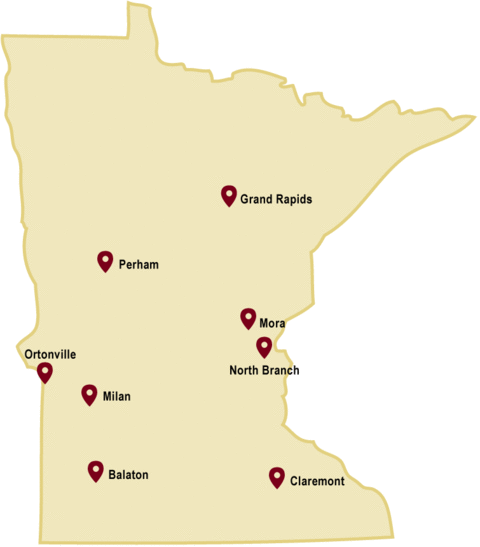We hear it from employers and community leaders trying to retain their workforce — “How can we get someone here if they can’t find affordable housing?"
— Ryan Pesch
Talk to any economic development leader in Greater Minnesota and it won't take long before the conversation turns to housing. Greater Minnesota's housing shortage is a problem with a complex set of causes, including the increasing cost of construction, the growing number of aging senior citizens, smaller household sizes, a construction industry attracted to high-cost housing projects, developers' reluctance to risk building new rental properties, and more. (Asche, 2018).
Because the problem is complex, solutions require new ways of thinking. In 2017, the state’s regional development organizations identified housing as a top learning focus.
They asked Extension to conduct case studies that highlight local solutions to the persistent housing issues confronting smaller communities.
What does it take to address housing issues?
Our studies did not uncover a one-size-fits-all solution or a step-by-step process that will work for all communities. Still, the problem-solving strategies of these communities had some things in common. Below are some key ideas communities can take from our studies:
The solutions described in these studies relied on partnerships among public and private funding sources, concerned organizations, and businesses that will benefit from having housing available to their workforce.
Some solutions involved taking advantage of funding from federal and state sources. Others meant tapping city or county funds or private investment. State housing organizations were key to helping communities learn about available funding for local projects. A few that were recommended include the Minnesota Housing Partnership and Minnesota Housing Finance Agency.
The perspectives of businesses, workers, residents of many types, and experts should all be brought to the table. Besides informing the issue, these conversations uncover ideas and generate local support.
A bit of success seems to lead to more success. Private developers were more likely to build and invest where housing projects were happening and where residents were being attracted to invest in housing. Moreover, progress on housing issues can lead to progress on other critical workforce issues.
We were impressed that all of the towns we studied are concerned that quality housing should be available to all members of their community and workforce. “There may have been a time when, at this critical juncture, towns would just throw up cheap housing so that workers have a roof over their heads,” says Ryan Pesch, Extension educator and project leader. “But these communities want more than that. They want workers to become residents, and they want residents to become satisfied community members. That attitude will make a difference for the future of these towns.”
Housing case study communities
Towns across Minnesota are featured in these case studies that describe local solutions to housing problems. Read their stories:
The Minnesota rural housing study project is a collaboration between the University of Minnesota Extension Department of Community Development and the Center for Small Towns. The studies were requested by the Minnesota Association of Development Organizations (MADO). It is jointly funded by the federally funded University EDA Center at the University of Minnesota and the Extension Department of Community Development.
Other workforce housing resources
Research in Pope County
In Glenwood and Pope County, Minnesota, community leaders decided to take a close look at their housing demand to find solutions. They worked with local industry leaders to ask employees where they want to live, how much they want to spend, and what housing barriers they face.
The results of this study informed local action and attracted developers to the area.
- Listen to a conversation with Ryan Pesch, Extension educator, and Scott Formo, executive director of the Lakes Area Chamber of Commerce and mayor of the city of Glenwood. Their study was featured in this episode of Vital Connections on Air.
- Read Workforce Housing in Pope County for study details and key findings.
Presentation
“Workforce housing has to be available, adequate, affordable, appropriate, and accessible to amenities like schools, jobs and health care.”
— Ann Ziebarth
Watch Ann Ziebarth's presentation on workforce housing at Extension’s Workforce Symposium in May 2018. Ann is a professor of housing studies at the University of Minnesota College of Design.
Redevelopment strategies
Handling dilapidated and vacant properties
Even as communities continue to find ways to develop new housing to meet residents’ needs, managing dilapidated and vacant buildings thoughtfully is a necessary part of any redevelopment strategy. Long-vacant buildings are unattractive, and can be hazards and potential dangers to local residents.
Local governments often take steps to handle these properties, including assessing the properties’ viability, taking legal action and funding demolition. In Western Minnesota, the Upper Minnesota Valley Regional Development Commission (UMVRDC) profiled demolition programs in their area. Read profiles about strategies communities used below.
- Swift County Demolition Program
- Lac qui Parle County Demolition Program
- Big Stone County Demolition Program
Visit this UMVRDC housing workshop page for information and resources for handling tax forfeited properties, including examples of local ordinances, property notices and assessments, as well as resources for statewide statutes and enforcement.





